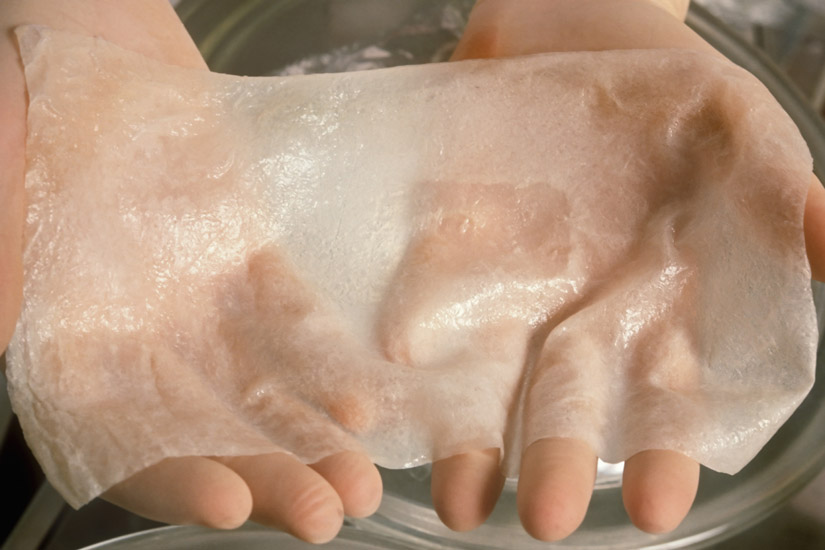When and by whom was the synthetic skin discovered?
Human skin is an engineering marvel. It is as flexible and soft as it is durable. It acts as a sealed shield that can prevent water loss, infection, and damage to cells exposed to ultraviolet rays from the sun. It is not easy to copy a material with all these features and to produce artificial leather.

John F. Burke, a surgeon at Massachusetts General Hospital in the United States, was looking for a substitute for the skin of his patients who had been exposed to fire. In such cases, the skin is usually taken from other parts of the body and transplanted to the injured area. However, in patients who have burned more than half of their body, there is not enough skin to replace the damaged skin.
In the 1970s, Burke began working with Ioannis V. Yannas, a professor of chemistry at the Massachusetts Institute of Technology (MIT). Yannas was working on a flexible protein called collagen, which usually occurs in the nerves of animals. Burke and Yannas created a grid-like membrane by combining collagen fibers from cowhide with long sugar molecules from shark cartilage. After drying this membrane, the duo placed the membrane on a piece of fluid plastic.
John F. Burke (July 22, 1922 – 2011) was an American medical researcher at Harvard University widely known for his co-invention of synthetic skin in 1981, together with Dr. Ioannis V. Yannas. Burke was also widely noted for developing a system of infection control in hospitals and showing that antibiotics given before surgery lower risks of post-operative infections. Burke was head of the Shriners Burns Institute and chief of trauma services at Massachusetts General Hospital, a professor of surgery at Harvard University.
These two layers, roughly the thickness of a paper towel, acted as a barrier against infection and water loss, while also serving as a scaffold on which new skin cells could grow. As the skin of the patients began to develop again, this artificial membrane, or in other words, the artificial skin, would break down on its own and after a while it could be peeled off from the skin. Although this new skin formed on the patients' bodies looked like normal skin, it did not contain sweat glands or hair follicles.
In 1981, Burke and Yannis proved that artificial leather can be used successfully on patients who have burned 50% to 90% of their bodies, providing a new source of hope for patients with this condition.
